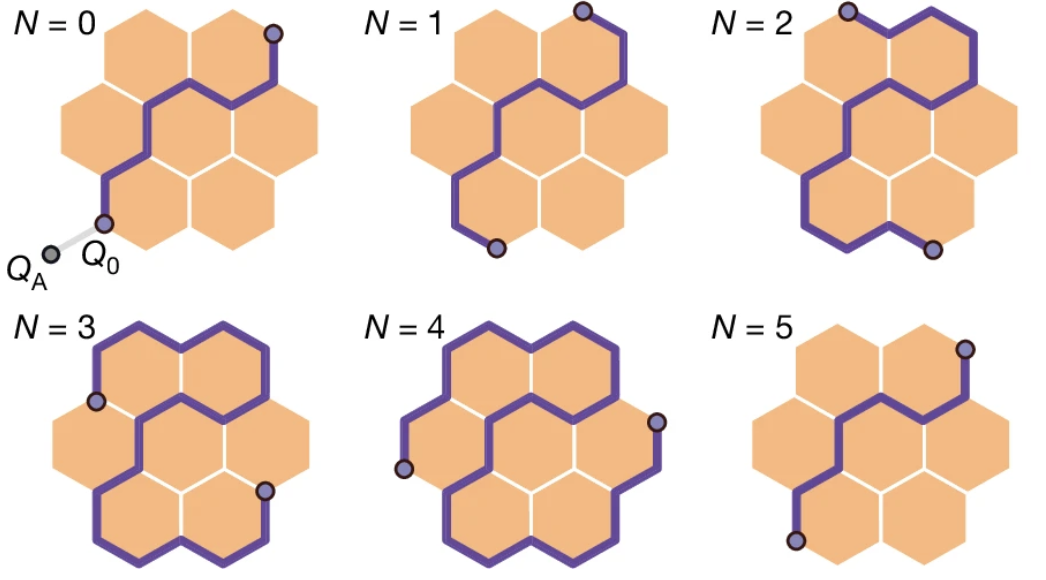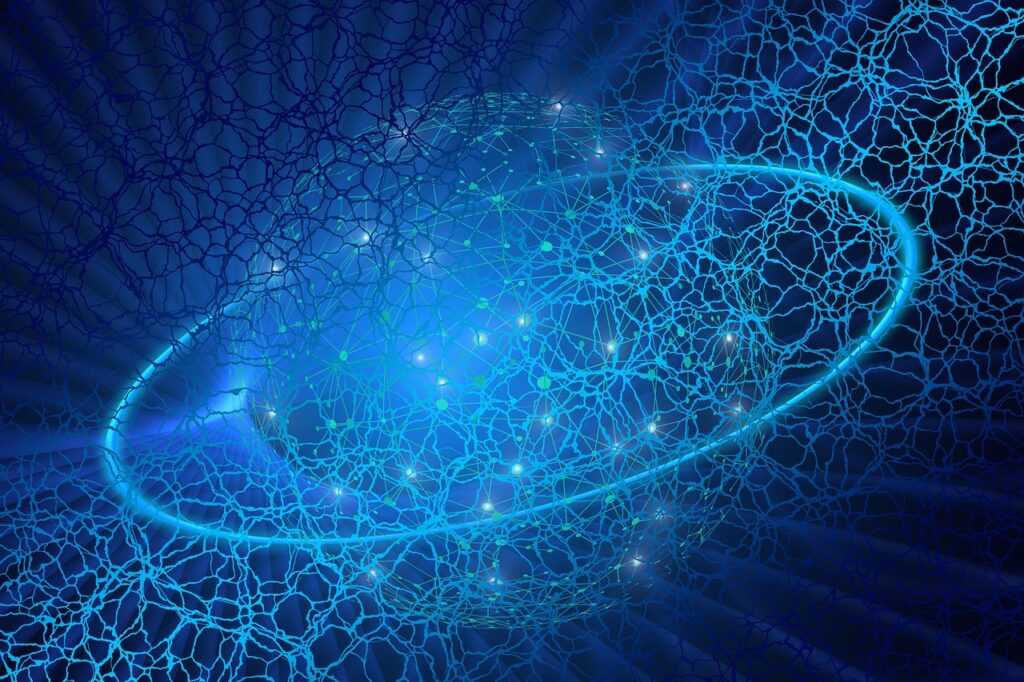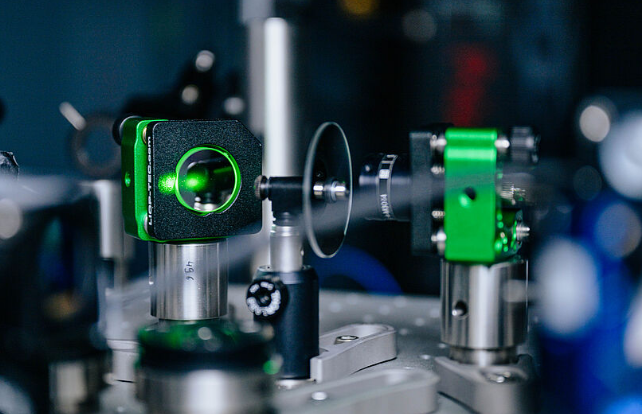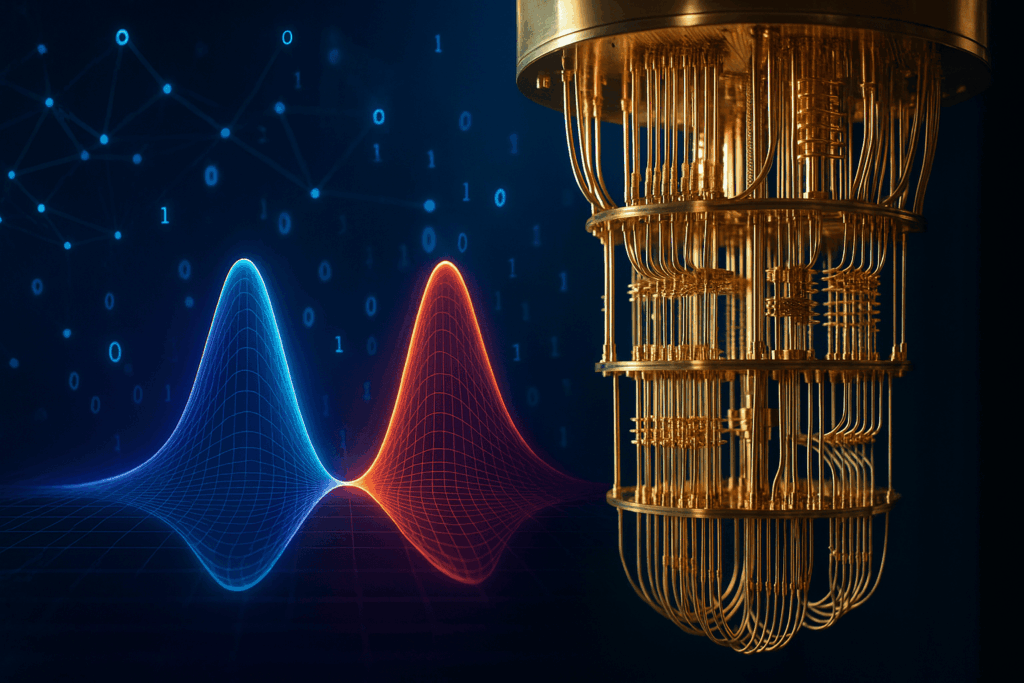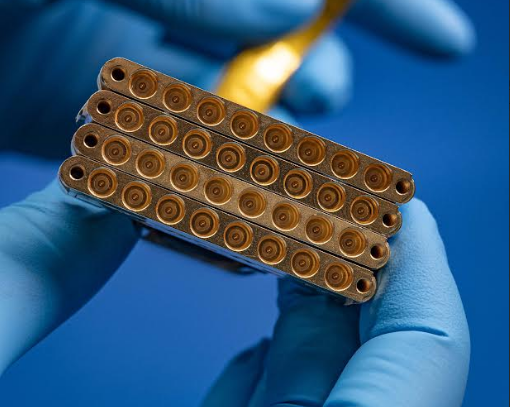Insider Brief
- Researchers used Google’s Sycamore-class superconducting quantum processor to realize Floquet topological order, a non-equilibrium phase of matter that cannot exist in static systems.
- The team demonstrated signatures including chiral edge modes and anyonic excitations, scaling experiments up to 58 qubits where classical simulation becomes intractable.
- New protocols, including a quantum interference test and bulk invariant measurements, show how quantum processors can probe exotic phases with potential relevance for error correction and quantum information science.
An international team of researchers has used Google’s superconducting quantum processor to create and study a new phase of matter that emerges only when a system is driven out of equilibrium. The work, published in Nature, shows how quantum computers can explore highly entangled phases that classical computers cannot efficiently simulate.
The study focuses on “Floquet topological order,” a type of quantum order predicted to arise when particles are periodically driven by external forces. Unlike familiar equilibrium phases — like solids or magnets — this order is only stable away from equilibrium. The researchers built a model known as the Floquet Kitaev system on a lattice of superconducting qubits and observed hallmarks of this exotic state.
“Quantum processors provide key insights into the thus-far largely unexplored landscape of highly entangled non-equilibrium phases of matter,” the team writes in the paper.

Among the signatures were “chiral edge modes,” special channels along the boundary that allow information to move in a protected way, and “anyons,” particle-like excitations that transmute back and forth as the system evolves. These features distinguish Floquet topological order from the phases that appear in systems at rest, according to the researchers.
The team writes: “The landscape of non-equilibrium phases of matter is largely unexplored so far. Digital quantum processors provide an ideal platform to reveal the highly entangled dynamical phases therein. The non-equilibrium topological order that we have probed in this work encapsulates a fundamentally unique phenomenology that is forbidden in thermal equilibrium.”
Scaling Into Classically Hard Territory
To demonstrate the physics, the team ran circuits involving as many as 58 qubits. At that scale, the entanglement generated by the periodic drive quickly overwhelms the capabilities of classical simulations. The researchers write that classical matrix-product state methods can only track such systems up to limited sizes before memory requirements explode superpolynomially. By contrast, the quantum processor can directly enact the dynamics, revealing patterns that would otherwise remain inaccessible.
This provides evidence that quantum hardware can serve as a discovery platform, probing behaviors in strongly entangled systems well before fault-tolerant machines arrive.
Methods to Detect Invisible Order
The study does not specifically name the processor, but the architecture points to the Sycamore-class superconducting chip built by Google. The device used a two-dimensional lattice of qubits linked through entangling operations that exploit a controlled energy-level swap between the state where both qubits are excited and a higher excited state, a technique that has become standard in Google’s hardware. To counteract errors from these gates and from readout, the team employed randomized compiling, dynamical decoupling and post-selection, which, according to the paper, enabled them to scale the Floquet Kitaev model to 58 qubits.
“Quantum processors allow us to design protocols for measuring observables that unambiguously relate to the underlying physics,” the team writes.
The researchers designed a kind of quantum interference test — known technically as an interferometric protocol — to extract information that can’t be seen directly. The technique uses an extra qubit as a probe to measure global phase information accumulated when anyons exchange places. This allowed them to establish a bulk invariant — a mathematical marker — that oscillates as anyons convert into one another in time. The oscillations confirmed the predicted “time-crystal–like” behavior, in which order repeats with a period different from the external drive.
The group also devised a way to map the energy spectrum of the edge modes by coupling an auxiliary qubit to the system. By analyzing correlations over time, they could track the chiral mode winding around the boundary, even under conditions that broke the system’s perfect solvability.
The results underline the potential of quantum processors to go beyond simulating chemistry or optimization and to act as laboratories for new physics. Floquet topological order has no counterpart in equilibrium and represents a class of states that are forbidden under conventional thermodynamics. Understanding such states could enrich approaches to quantum error correction, where topological order is already a key principle, and inspire new protocols for protecting information against noise, according to the study.
While the work is fundamental rather than applied, it suggests a path toward leveraging near-term quantum devices to generate and test ideas about exotic matter phases. In particular, the methods for measuring topological invariants and anyonic behavior could be adapted for other platforms, such as neutral atoms or trapped ions. In fact, the team does acknowledge similar work on a neutral atom device in the paper.
Limitations and Challenges
Despite the clear signatures, the experiments faced limits, which will likely set the stage for future work. Noise from imperfect gates and decoherence degraded signal strength, particularly in long sequences. The amplitudes of interference fringes decayed even as the measured phases remained stable. The robustness of the observed order was tested under disorder, showing resilience over the times accessible to the hardware, but the long-term stability in larger systems remains an open question.
Moreover, while 58 qubits is beyond the reach of brute-force simulation, it is still modest compared with the scales required for practical fault-tolerant computing. The study demonstrates discovery potential but does not yet offer a path to immediate applications in cryptography, optimization, or materials design.
Not Yet a Topological Quantum Computer
The link to topological states may invite speculation about whether this marks progress toward topological quantum computing, often described as a holy grail because of its potential to resist noise. The study is not a blueprint for a topological quantum computer, but it does touch on the physics such a machine would require. Topological quantum computing proposals rely on phases of matter where information is encoded in globally entangled states, making it less sensitive to local noise. The experiment showed that today’s processors can realize a form of topological order and probe anyonic excitations, concepts central to those proposals.
Still, there are major differences between this study and the work needed to explore topological quantum computing approaches. The edge modes and anyons observed here were short-lived signatures of exotic dynamics, not qubits capable of storing information fault-tolerantly. The system was also stabilized only over the limited timescales accessible to a noisy processor. For now, this remains a physics demonstration, not an engineering pathway.
Having said that, the link may still be meaningful. By showing that superconducting processors can access and measure topological order, the work gives researchers confidence that the conceptual ingredients of topological computing are not beyond reach. It strengthens the case that even before fully error-corrected quantum computers arrive, today’s devices can illuminate the landscape of exotic phases that may one day underpin practical fault-tolerant designs.
The researchers emphasize that the landscape of non-equilibrium quantum phases is still largely unexplored. The interferometric tools developed here could be extended to search for other dynamical orders, including time crystals and symmetry-protected phases. Scaling up the experiments with more qubits and higher fidelity gates will be critical to determine how these phases behave in the thermodynamic limit.
In parallel, theorists will need to define new order parameters suited to driven systems, since many of the concepts from equilibrium physics do not apply. The study points to the possibility of a “phase diagram” of dynamical quantum matter that quantum processors can help chart.
“New order parameters, possibly akin to our non-equilibrium loop order parameter, need to be developed to characterize these dynamical phases of matter,” the team writes.
The team included scientists from Technical University of Munich, Princeton University, Google Research and the University of Nottingham.

